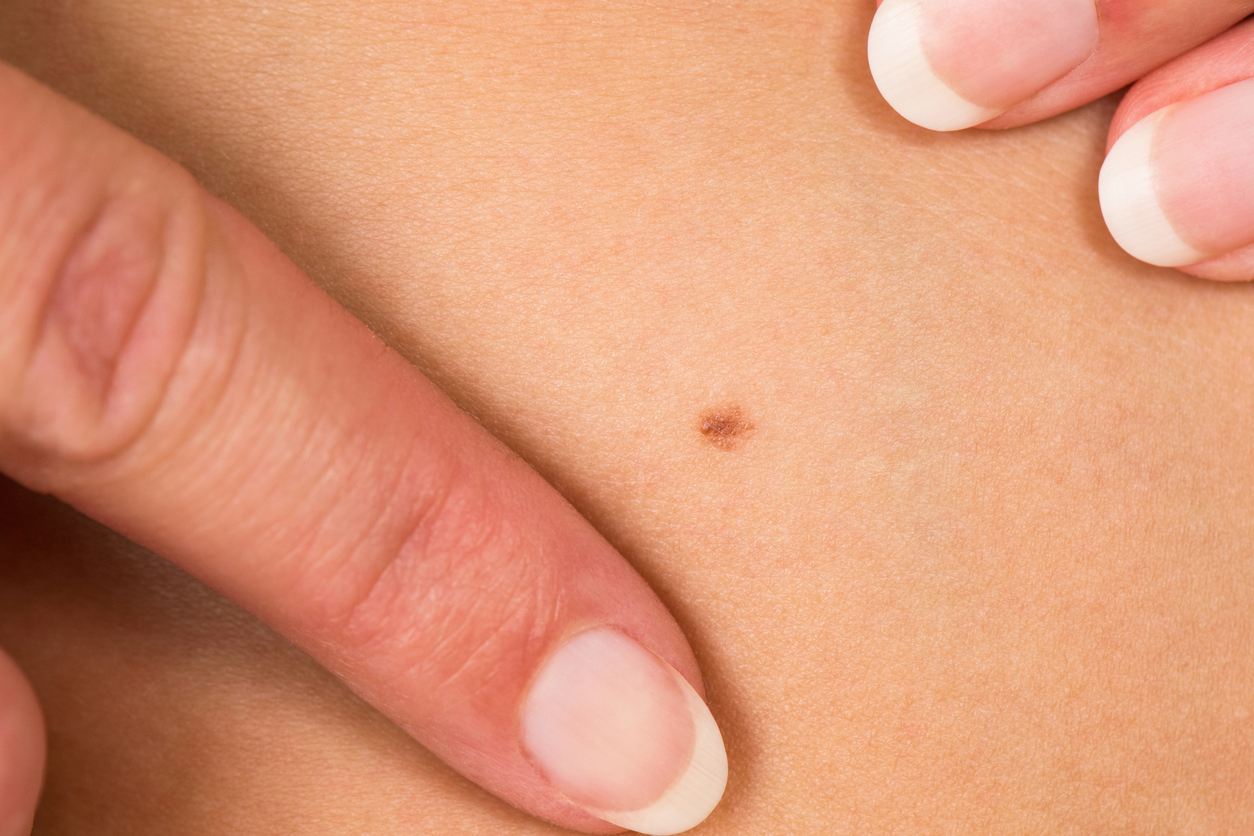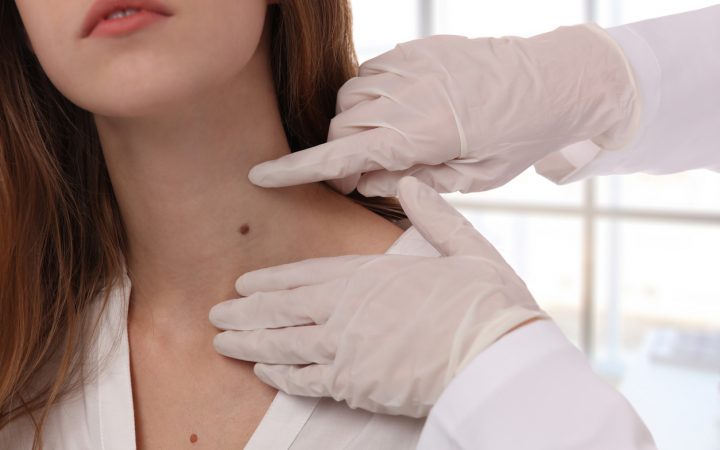Moles can be warning signs for serious skin issues, or they can be harmless nuisances. Sure, the odd movie star can pass a mole off as a beauty mark remember Cindy Crawford? But for most of us, moles are annoying at best, and potentially dangerous at worst.
The very best advice you’ll ever get about your moles is to see a dermatologist. Other doctors might have seen plenty of moles in their time, but only a licensed and experienced dermatologist has the training and background to confidently identify which moles are malignant and which are merely cosmetic blemishes.
Most of us have dealt with moles. Sometimes they’re large and pronounced; sometimes they appear to be freckles at first and grow or merge over time. And in most cases, they’re harmless. Because moles are so common, many people pay them too little attention or think of them as little imperfections that might require cosmetic surgery at some point. It’s easy to overlook their dangers. Here are four things you should know about moles, and one mistake you should avoid.
How Doctors Identify Troublesome Moles
Most people don’t see dermatologists regularly, so in most cases, the first doctor to evaluate your mole will be a general practitioner. Based on your mole’s visible characteristics, your GP might refer you to a dermatologist for a more intensive examination.
Briefly, your GP will look for these five characteristics:
- Asymmetry: is the mole round or oval-shaped, or is it growing more irregularly? Irregularly shaped moles are likely to be signs of trouble.
- Border: a benign mole has clearly defined borders; a problematic one will seem to fade into the surrounding skin.
- Colour: benign moles are evenly coloured (like the beauty marks sported by some movie stars); dangerous moles often contain many colours or shades of brown.
- Diameter: a mole larger than 6mm across requires careful examination.
- Evolution: even if a mole does not significantly increase in size over time, if it changes colour or shape, it should be examined immediately by a dermatologist.
Of those, the most alarming is the last. If your mole is a bit oddly shaped or is larger than 6mm across but stays that way over time, you should see a dermatologist at your convenience. But when moles begin to change dramatically, it’s time to get that referral from your GP right away and have a trained dermatologist take a close look.
Because we learn to live with moles, it can be difficult to assess whether they’re changing all that significantly. Your phone can help: start taking pictures of your moles every few weeks or so, and comparing them. Be sure to bring your pictures the next time you see your GP.

More Moles? Get Less Sun
What if your GP has evaluated your moles and found them harmless…but you see more and more of them as time goes on? The answer is probably right above your head. At least in the daytime.
Sun exposure is the leading cause of moles and other minor pigmentation issues. Lighter skin tones are especially vulnerable to skin damage, but everyone can suffer the effects of too much sun, and moles reflect one of the body’s defences against sunlight.
Even patients who keep themselves covered up and who use sunscreen in their later years can see a proliferation of moles and pigmentation issues due to sun exposure they suffered earlier in life. It’s not too early to start taking better care of your skin: wear adequate protection, and use a sunscreen rated at least SPF 30.
What if I Get Bad News?
If your dermatologist can’t entirely rule out the possibility that a mole is pre-cancerous, a biopsy is in order. This is the only perfectly accurate way to tell a harmless mole from a dangerous one. It might sound intimidating, but a biopsy is a simple, painless procedure that could save your life.
For you, a biopsy will involve a local anaesthetic, a small incision and a few stitches. A simple biopsy on a single mole will have you walking out the door 15 minutes after the procedure starts.
During the procedure, your dermatologist will remove part or all of your mole and will examine it closely under a microscope. If it’s indeed pre-cancerous, you’ll have a head start on treatment. And if it’s benign, you’ll have peace of mind.
Dermatologists suggest removal and biopsy whenever they have significant questions about a mole. If yours suggests the procedure, you’d be wise to agree.

What if I Get Good News…and Still, Want my Mole Removed?
If your dermatologist’s initial screening doesn’t suggest that your mole is pre-cancerous, and no biopsy is suggested, it may be wise to heed that advice as well. Many people get to this point and see an opportunity to remove moles that they consider unattractive or otherwise bothersome. That may be a mistake.
Like any surgery, mole removal carries a risk of bleeding, infection, and scarring. It’s one thing to sport a teeny little biopsy scar: no one will mind at all. It’s another to replace a mole with a scar simply for the sake of appearance. Not to mention the fact that mole removal doesn’t prevent the recurrence of moles in the same location. See UbiqiHealth’s explanation about mole removal by an aesthetic doctor.
When Your Mole’s Got to Go: Options for Mole Removal
For a variety of reasons, you and your dermatologist may agree that it’s time to remove a mole. Your best advice will come directly from your dermatologist, but here is a brief outline of your options.
- Shaving is a popular approach for moles that protrude from the skin’s surface. The procedure is what you’d expect: the mole is sliced off at the level of the surrounding skin. A scab will form over the treated area, but stitches are usually not needed, and very little scarring usually results. While this approach usually leaves less visual evidence, it opens up a greater chance that your mole will return.
- Excision is a more intensive approach and is necessary when moles develop beneath the skin’s surface. The entire mole is cut out, and the skin is closed with a few stitches. You will likely be left with a minor scar, but excision goes much further than shaving toward preventing recurrence.
- Other treatments replace the surgeon’s scalpel with other means of destroying mole tissue. These include radio waves, lasers, electric currents, and liquid nitrogen. Each tends to be useful in a specific range of cases, and each carries its own risks.
Above all, be sure to document your moles carefully, and to talk frankly about them with your GP and dermatologist alike.
